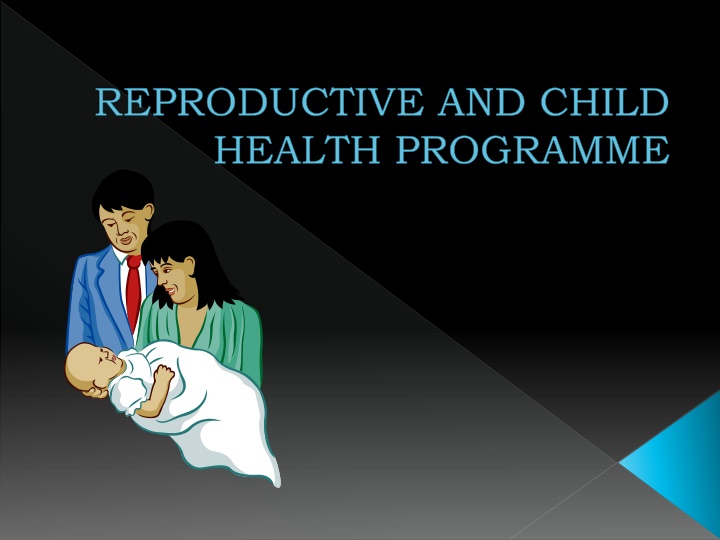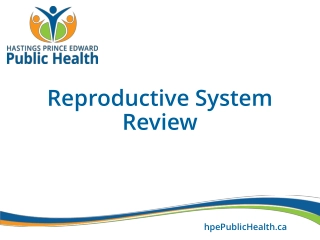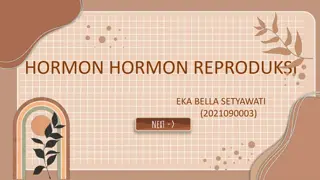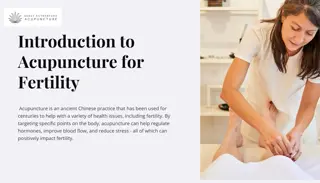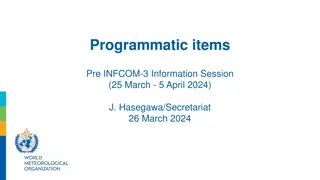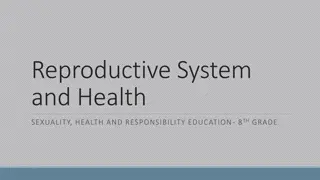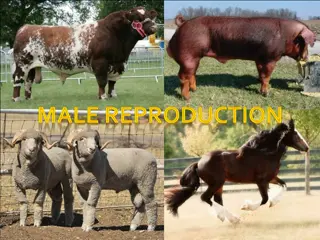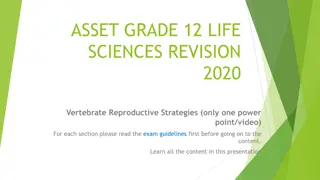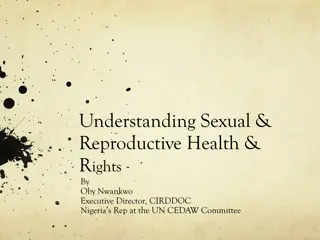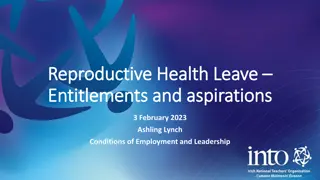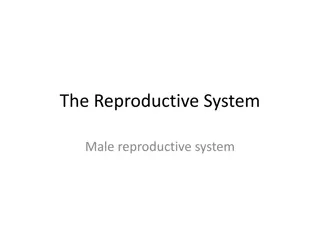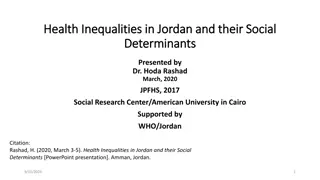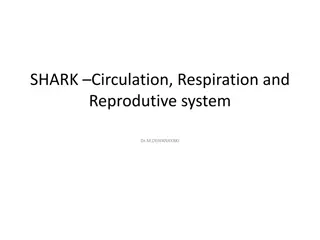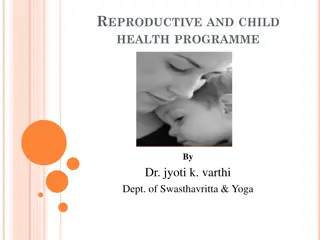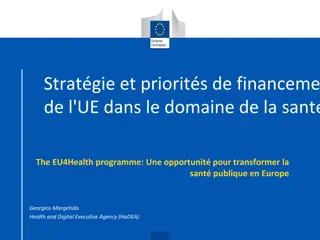Reproductive and Child Health Programme Overview
The Reproductive and Child Health Programme has a rich historical background dating back to 1952, with the aim of promoting the health of mothers and children, reducing infant and maternal mortality rates, and achieving population stabilization. The programme focuses on various interventions and strategies such as maternal care, child survival, prevention of RTIs and STIs, as well as management strategies like bottom-up planning and community participation. RCH Programme II aims to further reduce IMR, MMR, TFR, increase CPR, and enhance immunization coverage, especially in rural areas, with specific goals to achieve by 2011 encompassing reductions in population growth rate, IMR, and MMR, along with increases in CPR and immunization coverage.
Download Presentation

Please find below an Image/Link to download the presentation.
The content on the website is provided AS IS for your information and personal use only. It may not be sold, licensed, or shared on other websites without obtaining consent from the author.If you encounter any issues during the download, it is possible that the publisher has removed the file from their server.
You are allowed to download the files provided on this website for personal or commercial use, subject to the condition that they are used lawfully. All files are the property of their respective owners.
The content on the website is provided AS IS for your information and personal use only. It may not be sold, licensed, or shared on other websites without obtaining consent from the author.
E N D
Presentation Transcript
REPRODUCTIVE AND CHILD HEALTH PROGRAMME
Historical Background 1952- National Family Planning Programme 1977- National Family Welfare Programme 1985- Universal Immunization Programme 1992- Child Survival And Safe Motherhood Programme 1997- RCH (Phase-1) 2005- RCH (Phase-11)
RCH Programme- I Definition People have the ability to reproduce and regulate their fertility, women are able to go through pregnancy and child birth safety, the outcome of pregnancies is successful in terms of maternal and infant survival and wellbeing and couples are able to have sexual relations free of fear of pregnancies and of contracting diseases . (Fathalla,1989)
RCH Programme- I Immediate Objective-To promote health of mother and children. Intermediate Objective-To reduce IMR and MMR. Ultimate Objective- Population Stabilization
RCH Programme- I Intervention / Strategies:- Prevention $ Management of unwanted pregnancies Maternal Care Child Survival Prevention $ Management of RTIs $ STIs Prevention of HIV / AIDs
RCH Programme- I Management Strategies :- Bottom- up Planning Decentralized Training Management information and Evaluation System (MIES) $ IEC and Community Participation
RCH Programme- II AIM To reduce Infant Mortality Rate (IMR), Maternal Mortality Rate (MMR), Total Fertility Rate (TFR), To increase Couple Protection Rate (CPR), and Immunization coverage, specially in rural areas.
RCH Programme- II -Goals Goal Target Year 2001 - 2011 Percentage 1.62% Reduction of population growth rate Reduction of IMR 2007 2010 2010 <45/1000 <30/1000 Reduction of MMR 1.5/1000 live births Reduction of TFR 2010 2.1% Increase of CPR 2010 From 48.2% to 100% Increase of Immunization Coverage 2010 From 44.5% to 89% Improvement in the coverage of rural institutional deliveries 2002 03 2010 39.8% 80%
Lacunae of RCH-I Poor out reach service Inadequate financial resources Inadequate human resources MIES was lacking Effective network of FRU was lacking Poor infrastructure Quality of PHC s $CHC s service was poor Poor Neonatal and Adolescent health care Minimum community participation Regional variation
RCH Programme- II, Objectives To improve the management performance To develop human resources intensively To expand RCH services to tribal areas also To improve the quality, coverage and effectiveness of the existing services and more focused on empowered action group (EAG) states To monitor and evaluate services
Components of RCH-II Population Stabilization Maternal Health Newborn Care and Child Health Adolescent Health Control of RTIs / STIs Urban and Tribal Health Monitoring and Evaluation Other Priority areas
Components of RCH-II Population Stabilization- Strategies By incorporating the newer choices of contraception methods e.g:-Centchroman By increasing trained personals By converging the service at grass root level By public private partnership Social marketing of contraceptives to be strengthened Involving Panchayat Raj Institutions, Urban Local Bodies $ NGO s By increasing incentives
Components of RCH-II Maternal Health- Strategies Essential Obstetrical Care Three or More Checkups Two doses of TT IFA Tablet Counseling Emergency Obstetrical Care First Referral Unit
Components of RCH-II New Born Care and Child Health Effective Newborn Health Intervention During Antenatal Period Labor, Birth, $ the first 1- 2 hours Early Newborn Care Late Newborn Care
Components of RCH-II New Born Care and Child Health OBJECTIVES Skilled care at birth Package of preventive, promotive and curative intervention Strengthen IMNCI services
Components of RCH-II New Born Care and Child Health Strategies IMNCI plus Strengthening of health infrastructure and FRUs Ensuring referral service of sick neonates and utilization of referral funds Permitting ANMs to administer selected antibiotics like Gentamycin and co- trimoxazole by AWW
Cont.. Availability of drugs and supplies Good supervision and monitoring Efficiency of the administrative/ financial system Community based intervention Promoting breast feeding practices VitA, Iron and Folic Acid Supplimentation Strengthening the quality of UIP
Components of RCH-II Adolescent Health Subcentre Enroll newly married couple Provision of spacing methods Routine antenatal care and institutional delivery Referral service HIV/ AIDS /STIs preventive education Nutritional Counselling
Cont.. PHC $ CHC Contraceptive Management of menstrual disorder HIV/ AIDS /STIs preventive education and management Counseling
Components of RCH-II Control of RTIs /STIs Controlled by syndromic approach
Components of RCH-II Urban Health Urban Health Centers- 1:50,000 Population Medical Officer- 1 ANMs- 3-4 Lab Assistant- 1 Public Health Nurse- 1 Clerk- 1 Chowkidar- 1 Peon- 1
Components of RCH-II Tribal Health Community Level Sub centre PHC Block PHC / CHC
Components of RCH-II Monitoring and Evaluation MIES Planning Monitoring / Information Quality Assessment Evaluation Validation
Newer Schemes and Services Training of MOs Training of traditional birth attendents Prasoothi araike Janani SurakshaYojana Scheme Vandemataram Scheme Safe abortion service Medical Method-Mifepristone $ Misoprostol Manual VaccumAspiration
Evaluation 1.RCH Programme was launched in the year .. (1972, 1996, 1997, 1994) 2. In PHC, .. $.............. are the two drugs used for medical abortion. (Mifepristone and Misoprostone, Mifepristone and Oxytocin Meperidine and Misoprostone)
Cont. 3. RCH II was started from 1stApril . Up to (2005-2009, 2005-2025, 2005-2050)
ASSIGNMENT Write an assignment on Janani Suraksha Yojana and the role of ASHA in this scheme.
